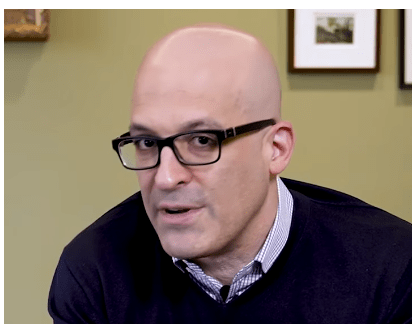Almost a million bucks annually. According to reports, Matthew Bershadker, the current CEO of the ASPCA, receives that amount in compensation and benefits. That number has sparked a great deal of public outrage for a nonprofit that depends on generous donations to survive. With a basic salary of $881,785 and perks of about $108,740, his remuneration is far more than the norm for leaders in the nonprofit sector. The average nonprofit CEO makes around $123,000 a year, according to Charity Navigator, thus Bershadker’s compensation is over eight times the average.

These numbers seem glaringly inconsistent with the ASPCA’s pitch to supporters who are used to seeing slow-motion pictures of tearful-eyed pups and heartfelt piano music. They believe their money goes directly toward protecting animals, so they contribute liberally, frequently on a whim. However, a sizable amount funds CEO compensation, extensive marketing initiatives, and administrative infrastructure. More than 150 ASPCA staffers have six-figure salaries, according to recent reports, and the organization has spent over $94 million on fundraising activities, which include direct mail and online advertising aimed at generating sympathy and, ideally, action.
ASPCA CEO Matthew Bershadker: Professional Profile
| Category | Information |
|---|---|
| Full Name | Matthew Bershadker |
| Current Role | President and CEO, ASPCA |
| Organization | American Society for the Prevention of Cruelty to Animals |
| Base Salary | $881,785 |
| Additional Compensation | $108,740 (including retirement and benefits) |
| Total Compensation | Over $990,000 per year |
| Hourly Earnings (Estimate) | $424/hour |
| Employees with 6-Figure Pay | Over 150 employees |
| CharityWatch Rating | Grade “C” |
| ASPCA Official Website | www.aspca.org |
Questions regarding how national organizations like the ASPCA allocate their funding grew during the peak of the COVID-19 outbreak, when many local shelters were under tremendous strain and had fewer resources. Just a small portion of ASPCA’s donations go to nearby shelters or rescue operations, according to HumaneWatch, a nonprofit watchdog group. Rather, they discovered that salaries and benefits account for about 38 cents of every dollar. Since many grassroots shelters and rescue facilities rely entirely on volunteers to operate, this revelation has drawn a lot of public attention.
Many find the size of offshore holdings ascribed to the ASPCA to be especially concerning. It has been revealed that over $21 million has been stashed in foreign bank accounts, mostly in the Caribbean. Although the action is legally justified, it seems unethical for a company that depends so much on emotional appeals. Unquestionably, the optics are startling. It almost feels like a betrayal to regular contributors who struggle to make monthly payments because they support the protection of vulnerable animals when they learn about offshore reserves and salaries close to millions of dollars.
However, some contend that extraordinary talent is necessary to manage a nationwide organization of this kind. Bershadker assumed leadership of the ASPCA in 2013 after joining the organization in 2001. His supporters note out that under his direction, the organization’s reach has expanded dramatically, enabling substantial legislative initiatives, extensive rescues, and raised awareness of animal welfare issues. They contend that competitive pay is necessary to draw in and keep talented leaders, especially in light of the fact that nonprofit organizations must contend with the corporate sector for executive talent.
For many grassroots animal advocates, however, who witness local shelters closing, volunteers exhausting themselves, and adoptable animals without basic care, that explanation seems flimsy. The differences are especially noticeable when examined side by side. Local shelters have skeleton teams and operate on very tight budgets. In addition to managing adoptions, veterinary visits, and emergency rescue calls, its directors frequently receive pay that is lower than the national average, if it is at all.
The hourly wage at Bershadker is about $424. When compared to the $50 that the majority of local shelter directors may receive for a full day’s work—assuming they receive any compensation at all—that is an astounding amount. Even though both local implementation efforts and the national branding arm fall under the same philosophical tent of animal advocacy, the disparity between them keeps growing.
One particularly important factor is the ASPCA’s current CharityWatch public grade of “C.” Concerns regarding efficiency and openness are given more weight by this mediocre grade. The organization’s overall impact is being called into question more and more because of its internal procedures and financial objectives, even though it does carry out important services like disaster response and legislative campaigning.
The ASPCA has a contentious influence on how law enforcement responds to animal welfare issues. Critics contend that although the organization has trained thousands of officers to look into cruelty, community-based remedies are occasionally overshadowed by this influence. Some people view the ASPCA’s interventions as being too directive and top-down, rather than empowering and supporting regional animal care initiatives.
The ASPCA has supported programs like the “Factory Farm Detox” in recent years, urging people to purchase plant-based substitutes and look for meat products that have received welfare certification. Despite their morally sound intentions, these efforts have elicited conflicting responses. The group is accused by farmers and ranchers of promoting politically motivated objectives that are out of step with the realities of rural communities.
In light of this, the controversy over Bershadker’s pay serves as a metaphor for a more significant problem: how big organizations strike a balance between influence on the ground and brand development. There is a growing disparity between the glitzy national advertisements and the practical day-to-day work of local shelters. Social media users frequently wonder if their donations are going toward executive bonuses or animal care, which has made this tension more apparent.
Demands for accountability are becoming more popular. Before contributing, many contributors now look over financial records, analyze administrative expenses, and look at third-party ratings. Although they still have some force, emotional appeals are insufficient nowadays. Donors want guarantees that their funds aren’t going toward huge corporate-style pay structures and anticipate a clear, measurable benefit.
The ASPCA has a chance to set a good example here. It may restore confidence and increase effect by reevaluating the way it allocates funding, structures CEO compensation, and interacts with its base of supporters. Building trust takes time, but losing it can happen quickly. For a company that depends so much on emotional credibility, preserving that trust should be a primary concern.
